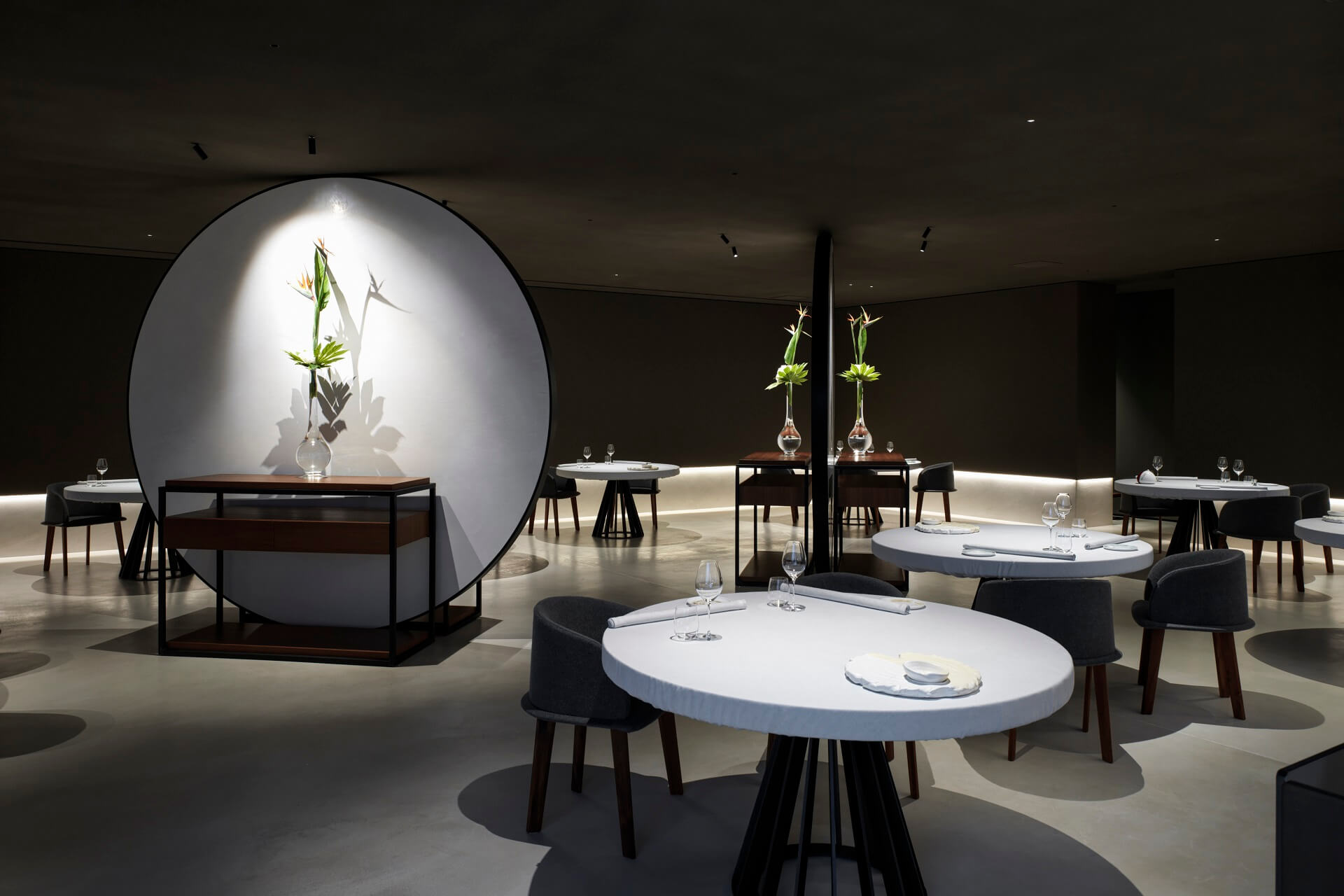Discover a design concept from Marco Acerbis , Ristorante Bolle, the restaurant in Lallio in the Provence of Bergamo that was recently awarded a Michelin Star, the most coveted award in the industry.
Marco Acerbis in the Worlds of Food & Architecture
“I am convinced that good architecture is in the details, in taking care of often secondary themes, in the harmony of the whole, in the rule of counterbalance because even a contrast, if well thought out and intelligible, helps to create a syntax, helps to read space, giving a clear hierarchy of forms and elements. The good architect is the one who cannot be seen. The designer who succeeds in adding value is the one who puts aside his own visibility and makes the building stand out,” says Marco Acerbis.
In the design of Ristorante Bolle, the relationship between haute cuisine and design is a continuous dialogue between vision, matter and senses, a dialogue between ancient and present, memory and culture, materiality and emotion.
From the onset the idea was to create a location for living a truly gastronomic and environmental experience capable of uncovering a new way of restaurant design, where already at the briefing stage the goal is precisely to help the restaurant compete for a Michelin star.
Bolle was designed to enhance the senses offering diners a place where they can experience the relationship with food, those moments of anticipation and sharing an exquisite gustatory experience set in a dimension of continuous aesthetic surprise that straddles a sense private intimacy and completeness.
The design of restaurant architecture is fundamental to setting the background for guests to have a unique experience along with the food. Furniture, light, spaces, and finishes play a major role as they define the atmosphere, the core element of the dining experience. The design required a precise balance between ambience, privacy, functionality, and an interior design that impresses.
In the contemporary era, food is history, identity, the memory of a place, and the tradition of a people of which chefs have become the new custodians, assuming in turn the dimension of gurus, models, stars, and protagonists of the contemporary cultural and communicative scenario.
And if cooks are stars, their stage is the kitchen, their audience is the dining room. In this complex ecosystem, architecture plays a fundamental role, qualifying as the theater of the great food and wine miracle of our time
Food has been a terrain of reflection and creative experimentation for generations of designers. In various contexts, more than the architectural intervention, the choice of furnishings can be decisive – depending on the characteristics of the client, the positioning of the venue, and the budget available. The selection of furniture and supplies in agribusiness is particularly complex, contemplating instances that, in addition to aesthetics and functionality, must refer to precise standards of hygiene and ergonomics.
Experience Ristorante Bolle
A form-conscious restaurant in which order, light, and the alternation of almost raw materials create an environment where at the apex of spatial transformation one can enjoy the highest culinary expression of matter, transformed into emotion.
Bolle is experimentation with elements. Light concrete and waxed iron, such different materials, attract and repel each other in a balance of forces. The stained-glass window, with its wooden shelves and deep transparencies through the display on the side of the Pentole Agnelli showroom, bring the visitor, albeit temporarily, back into the real world of objects and design.
The journey into this sensorial cocoon begins with climbing the stairs, designed in the opposite direction to the entrance. A bold choice that asks the visitor to do an about-face, as if to stop thinking to focus on the next emotion. On reaching the top floor, the volume explodes. The height is accentuated and there is a moment of total taking in of the spaces. From the top guests can admire the atrium, yet what really attracts is the deep, dark ambience of the room, with three giant disks three meters in diameter capture the eye, rolled there almost as if by accident.
At the helm of the kitchen is chef Marco Stagi, born in 1990, from Bergamo. Stagi creates the menu based on his prestigious experiences having worked as in Alba alongside the tristate chef Enrico Crippa, as well as abroad with the three-star Michelin chef Peter Goossens, and again in Italy at Casa Perbellini. His is a minimal and geometric cuisine, essential and without too many frills or unnecessary additions. It is architecture on the plate marked by the wonder of flavors.







